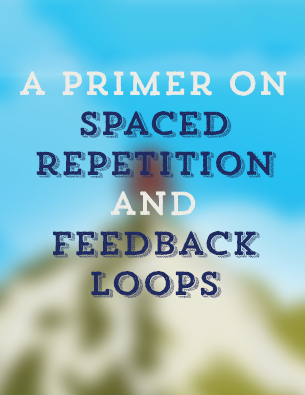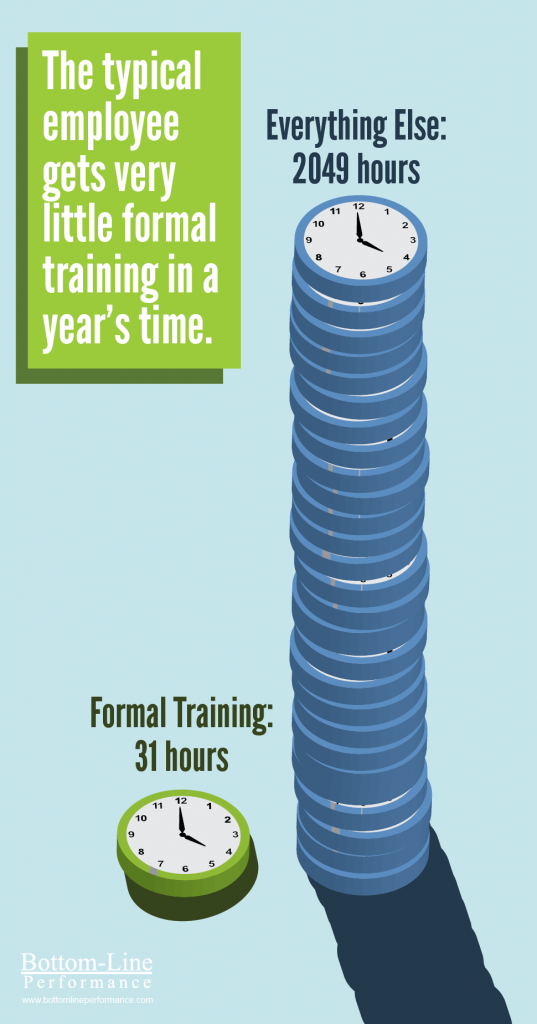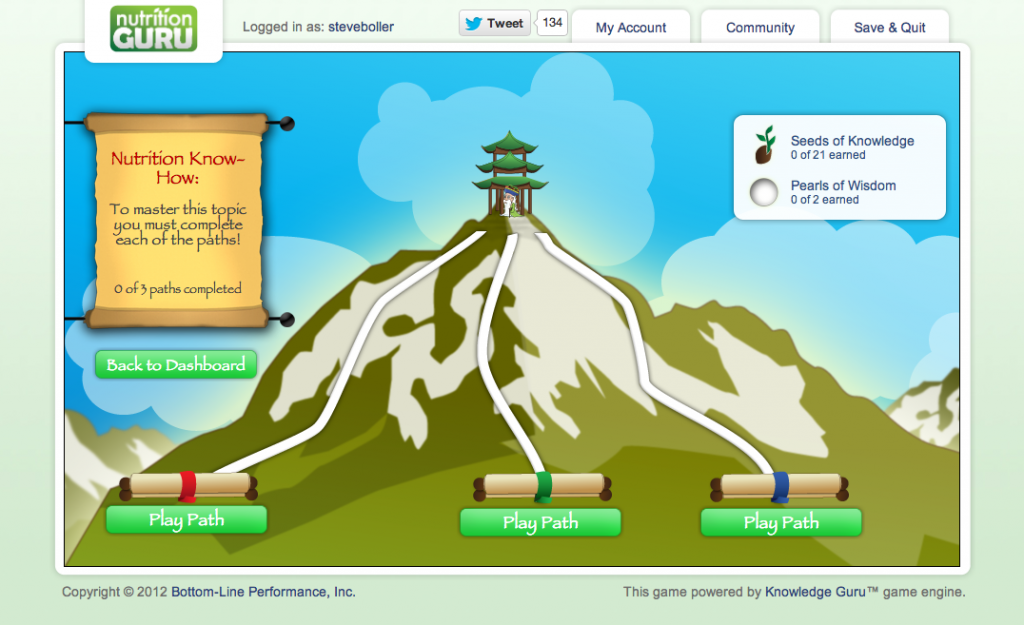 Interested in spaced learning and distributed practice? Then download our free Primer on Spaced Repetition and Feedback Loops. This guide will teach you everything you need to know about these concepts so you can incorporate them in your own training.
Interested in spaced learning and distributed practice? Then download our free Primer on Spaced Repetition and Feedback Loops. This guide will teach you everything you need to know about these concepts so you can incorporate them in your own training.
Students are often told to study for a few minutes a day, every day, instead of cramming for a test. Musicians know that consistent, daily practice is the only way to learn a challenging piece. Research on the benefits of distributing our learning into small chunks has been around for a long time.

…So why do corporate trainers forget this fact when delivering eLearning and Instructor-led training? When did we start thinking of learning as a one-time event? If formal training is the only form of learning in your plan, and training is only happening a few times a year, L&D is not doing it’s job in supporting workplace performance. You must include opportunities for practice, reinforcement and reflection in your L&D mix.
Use Gamification to Space the Learning
In a recent article for Learning Solutions Magazine, Karl Kapp shared a case study on Pep Boys‘ approach to Retail Safety and Loss Prevention training. They used a gamification platform to deliver daily reinforcement of the monthly safety and loss prevention training through a fun, quiz-style game. Kapp describes the project in greater detail:
Associates answered quick, targeted questions related to risk, loss prevention, safety, and operational policies and procedures—standard questions in these areas. If they answered correctly, they played a slot-machine game titled “Quiz to Win” for a chance to win cash prizes. If they answered incorrectly, the system immediately presented a short training piece designed to specifically address the topic covered in the initial question. Questions repeated at various intervals until the associate demonstrated mastery of the topic. The entire process takes 30-90 seconds each day and associates do it either at the beginning of a shift or during downtime throughout the day.
Game-based learning and gamification have many different applications, but using a short game-like experience as a daily reinforcement activity is, frankly, an excellent idea. Pep Boys reported a voluntary participation rate of 95% and a 45% reduction in costly claim counts. I’m sure many trainers can’t claim a 95% participation rate for some mandatory training! By giving employees a fun and motivating experience they could complete in just a few minutes’ time every day, Pep Boys was able to ensure the training it delivers every month was properly reinforced. By making the reinforcement a fun, gamified experience, players were self-motivated to keep participating and reviewing the content.
Market Your Learning Internally
One of the best ways encourage distributed practice is to make employees want to come back and review. Offering some sort of external reward, being consistent and engaging in your reminders, and making the reminders memorable will all help.
Example: ExactTarget. Now a part of Salesforce, ExactTarget is a leader in the digital marketing space. It should come as no surprise that ExactTarget’s L&D function is best-in-class at marketing their training internally. We built a Knowledge Guru® game for ExactTarget to support the ramp-up for a new product launch, but it was ExactTarget’s reinforcement tactics and internal marketing efforts that really made the project a success.

ExactTarget furnished prizes for the top players and displayed advertisements on the LCD monitors all over their offices. They also sent consistent emails updating players on game progress and encouraged players to log back in and compete for prizes. This creates a culture of “fun” for the employees, but more importantly it encourages lots of distributed practice and reinforcement over a longer period of time than traditional methods.
Build spaced learning into your training design
Creating a separate reinforcement activity can be effective, and so can consistently marketing an activity and giving people an opportunity to return and review. But what about building opportunities for spaced learning and distributed practice right into the learning solution? That was our approach when designing Knowledge Guru. As this tutorial post explains, each training topic in the game requires players to climb three paths and deliver scrolls to the guru. The topic only has 5 – 10 total unique questions, but each of the three paths has a different iteration of the same question. By the time learners complete the paths, they have been exposed to the same information three different times.

Guru Grab Bag Mode: The Guru Grab Bag mode in Knowledge Guru encourages players to return to the game and practice even after completing the game. Grab Bag is only unlocked when players complete all of the normal game mode topics. It’s easy for the L&D professional administering the game to encourage players to return to the game later to compete in the “Grab Bag Round,” where all questions in the game are mixed together and players try and see how big they can get their streak of correct responses. If a player plays Guru Grab Bag long enough, they will be exposed to all of the game questions again, which helps them log more distributed practice time.
Distributed Practice Helps the Bottom Line
When you’re trying to solve a performance challenge, you need to give learners the tools and opportunities to learn as quickly as possible. Failing to create a plan for sufficient reinforcement and distributed practice will only lead to increasing costs further down the line. Take some time up-front to plan the reinforcement and internal marketing of your training. If you can, build the distributed practice right into your learning design.



Gamification is very interesting. Video games are similar to the human life. I believe that is where the creator got their idea from. We both face challenges and rewards. As well as failures and successes.